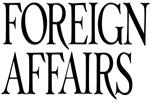The Winter of the Patriarch: The Nazarbayev Era Is Over, but What Comes Next for Kazakhstan? (di Nargis Kassenova)

The era of Nursultan Nazarbayev is over in Kazakhstan. Six days of tumult from the start of the new year brought an end to three decades of his authoritarian rule, first as president until 2019 and then as the “leader of the nation,” endowed with considerable powers and legal immunity for life. Mass protests flared on January 1 and led to unprecedented violence in a number of cities that left hundreds of people dead. The demonstrations and riots shook the regime that Nazarbayev had built and fortified over 30 years. They also gave his ostensible successor, President Kassym-Jomart Tokayev, the impetus to finally pry the country from his grip.
Nazarbayev had made way for Tokayev when he stepped down from the presidency in 2019. At the time, the news had sparked elation and hopes for genuine change. But it soon became apparent that Nazarbayev was going nowhere. Tokayev renamed Astana, the capital city, Nur-Sultan to honor his predecessor. Nazarbayev remained the head of the ruling Nur Otan party and chair of the Security Council, a constitutional advisory body. He also kept representing Kazakhstan at major international meetings (his last such appearance came at the Commonwealth of Independent States summit in St. Petersburg in December 2021). There was no masking the fact that Nazarbayev still called the shots.
That is no longer the case. The exact sequence of events is still murky, but it seems that the popular unrest this month precipitated a clash between Nazarbayev’s clique and Tokayev. The former allegedly used its networks to stir attacks and unleash chaos in Almaty, Kazakhstan's largest city, aimed at toppling the sitting president; Tokayev invited troops from the Collective Security Treaty Organization (CSTO)—the Russian-led regional alliance—to help quell the unrest and safeguard the government. As of now, Tokayev has emerged the victor, assuming full executive powers, stripping Nazarbayev of his position as chair of the Security Council, and sacking and detaining political figures closely aligned with him.
But it would be a mistake to see these events simply through the prism of a contest for power. Deeper currents roil beneath the palace intrigue. The anger on the streets reflected genuine and deep political and social problems in the country, which has experienced enormous change since independence in 1991. The protests were not a smokescreen for the attempted coup but rather a reflection of the frustration Kazakhs feel with widening inequality, the entrenched corruption of elites, and a calcified political system.
Tokayev seems aware of these grievances and has already moved to address them. He may seek to redistribute some of the assets accumulated by the Nazarbayev family and its cronies and better allocate the country’s resources to tackle socioeconomic inequalities. But real systemic change in Kazakhstan remains a distant prospect.
A FIRE SPREADS FROM ZHANAOZEN
Until this month, Nazarbayev effectively ruled Kazakhstan for the entirety of its three-decade history as an independent country. The country’s first president supervised a massive transformation as Kazakhstan became a market economy and sought to capitalize on its tremendous reserves of oil and gas. Like Russia, Kazakhstan was quick to adopt shock-therapy economic reforms in the 1990s. The country’s reformers, guided by advisers from international financial institutions such as the World Bank and the International Monetary Fund, also dismantled the Soviet welfare state as part of a sweeping bid to create a market economy. They reduced and partially privatized previously comprehensive and egalitarian social provisions.
Glitzy cosmopolitan pockets of wealth, visible in the center of Almaty, for example, contrasted with the poorer outskirts of the city and impoverished rural areas. Ordinary Kazakhs did not benefit as much as they should have from the wealth generated by these changes; revenues were never distributed evenly but instead helped create a class of oligarchs and cronies who buttressed Nazarbayev’s increasingly corrupt regime.
The match that lit the fire this month was another liberalizing reform. On January 1, the government lifted a cap on the price of butane and propane in the hope of eliminating shortages that were produced by certain subsidies. This resulted in the doubling of the cost of liquefied petroleum gas, a cheaper fuel used by many people in the west of Kazakhstan to run their cars. Anger at the surge in prices ignited protests in Zhanaozen, a town in western Kazakhstan, that later swelled into a nationwide wave.
Despite its relatively small size and peripheral location, Zhanaozen maintains an enormously symbolic place in Kazakhstan’s political landscape. It is emblematic of the widening gulf between the country’s stratospherically wealthy elites and the general public. Zhanaozen sits in an oil-producing region, but its inhabitants remain relatively poor even though they help produce the wealth of the country. Residents see the fruits of their labor siphoned off to the capital city, Nur-Sultan, in the north and the commercial capital, Almaty, in the south—and farther still to the offshore accounts of Kazakh oligarchs. The town is no stranger to grievance and protest. In 2011, police killed at least 14 people (and maybe dozens more) in Zhanaozen in the midst of an oil workers’ strike. That tragic event was the biggest blot on the history of independent Kazakhstan—until this month.
THE FADED CHARISMA OF A CHARISMATIC LEADER
What started in Zhanaozen as indignation about fuel prices quickly ballooned into a broader, political upwelling of anger. Kazakhs directed their ire at Nazarbayev and the regime he had built, calling for the removal of the government and for free and fair elections. They gathered in city squares, singing the national anthem and waving Kazakhstan’s flag. If anything, these protests showed that 30 years of nation building had at least managed to produce an active citizenry. The slogan of the protests was Shal, ket! (“Old man, leave!”)—a not-so-polite invitation to the 81-year-old Nazarbayev to relinquish power.
For years, Nazarbayev had enjoyed genuine popular support. He rode the reforms of Soviet President Mikhail Gorbachev to the top of the Kazakh Soviet Socialist Republic and was seen as a highly capable, open-minded, and charismatic leader. Three decades later, this once gleaming image is tarnished. Many Kazakhs deride the system created by Nazarbayev as deeply corrupt and unjust. His family members and friends became some of the most powerful people in the country, occupying top public positions. They also ranked among the richest people on the planet, living lives of extravagant conspicuous consumption. Corruption hollowed out governance, with civil servants rewarded for their loyalty to the Nazarbayev clique rather than their acumen.
Using familiar techniques, the regime suppressed the political opposition through coercion and co-optation. It put constant pressure on independent media and marginalized human rights groups. And it sought to elevate the personality cult of Nazarbayev in the absence of any clearly defined political ideology.
Open political contestation may have become impossible, but that didn’t mean political tensions had vanished. To the contrary, rivalries simmered inside the family and the court and occasionally burst into public view. In 2001, Nazarbayev’s son-in-law Rakhat Aliyev was removed from his position as the powerful chair of the National Security Committee, after allegedly plotting a coup. In fact, authorities have accused four different chairs of this committee—including Nazarbayev’s ally Karim Massimov in the wake of the recent tumult—of treason in the past three decades, a reflection of the inherent instability of the Kazakh regime.
TOKAYEV IN CHARGE
The upheaval this month delivered a major jolt to Kazakhstan’s political system. Now exercising sole executive control, Tokayev has moved quickly to demonstrate his understanding of the public mood. He has announced economic changes and promised future political reforms.
The direction of socioeconomic reforms is already well defined; Tokayev wants to build a modern welfare state. In his address to the parliament on January 11, he acknowledged the problematic distribution of wealth in the country and how the benefits of economic growth have accrued to a narrow class. He criticized government agencies for minimizing economic hardship in the country, masking “the real situation with terms like productive self-employed, informal employment” and leaving many people “in a state of unemployment and social insecurity.” He called for “a qualitative renewal of social and labor policies.” Among the measures he proposed were a reform of budgeting decisions between the center and provinces, the adoption of a social code that would define the new direction of government policy and serve as the “core element of the new social contract,” the development of targeted employment and education programs, and the creation of a public-private fund aimed at resolving social and economic problems. These reforms suggest that Tokayev has been paying attention to the demands of the street. It also reflects a growing international trend away from free-market economics toward improved social welfare protections.
The direction of political reforms remains unclear. Events this month have led to a shakeup and redistribution of power at the top. Optimists hope that Tokayev will expunge the most odious elements of the Nazarbayev era. Nevertheless, the political system remains fundamentally the same. Tokayev has in the past signaled that he wants to improve channels of communication and trust between the state and the people, but such rhetoric has so far proved to be merely talk.
Tokayev will also have to contend with public disquiet about having turned to Russia for aid. The upheaval underlined both how Kazakhstan and its elites remain dependent on Russia and the growing wide-based desire for genuine sovereignty. Tokayev’s decision to invite CSTO troops has appalled many citizens, who see the move as a betrayal of Kazakhstan’s independence. They fear that it gives strength to Russian neoimperialists who question Kazakhstan’s right to its northern regions that border Russia. That Russia under President Vladimir Putin is becoming more assertive in the post-Soviet space only aggravates these concerns and fears.
Both the protests and the invitation of Russian troops to help resolve the crisis in Kazakhstan will trigger major reflections among the Kazakh intelligentsia and public on the state of the country. The shakeup of Kazakhstan’s political system and the exposure of its major deficiencies could spur improved governance. Political elites might realize that it’s in their interest to take greater responsibility for the welfare of the general public.
Tokayev, however, is still a product of the old system. His government may fail to deliver the promised reforms and lean back on the habits of the Nazarbayev era. But at the very least, events this month have shown that Kazakhs will not quietly allow their leaders to ignore their discontent; they will make their voices heard.
Articolo pubblicato il 18 gennaio 2022
Fonte: Foreign Affairs
Autore: Nargis Kassenova
Articolo Originale: https://www.foreignaffairs.com/articles/kazakhstan/2022-01-18/winter-patriarch




